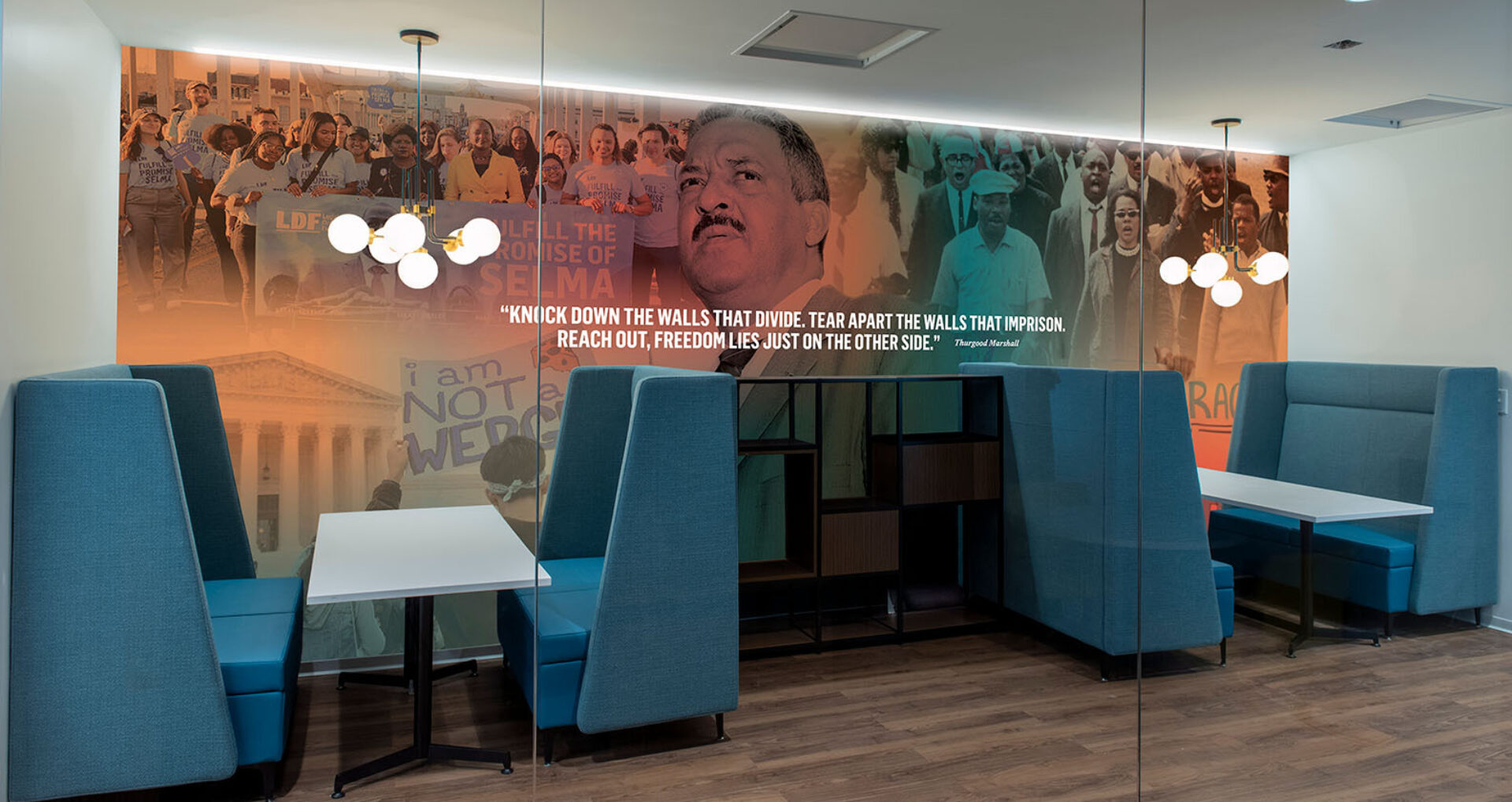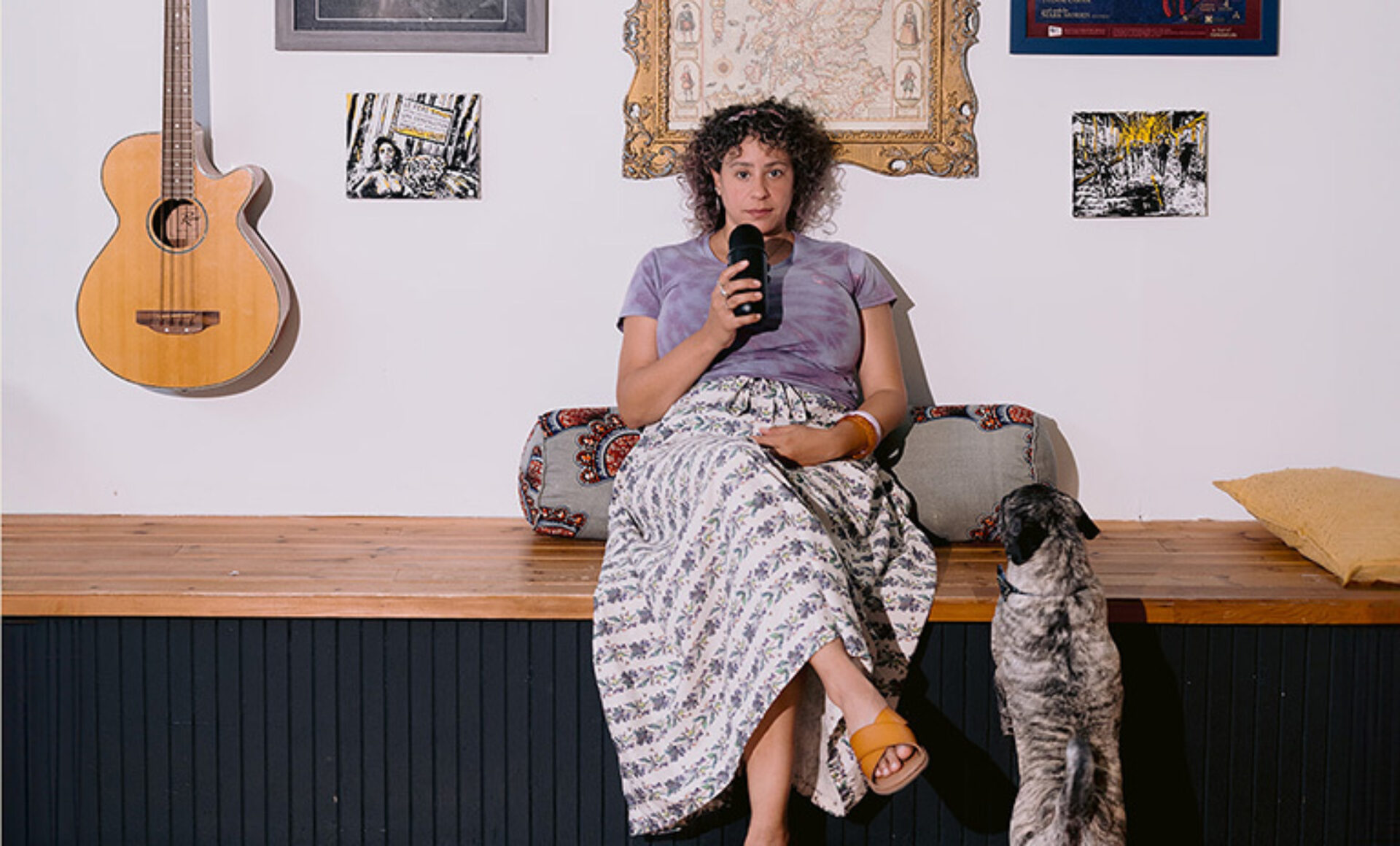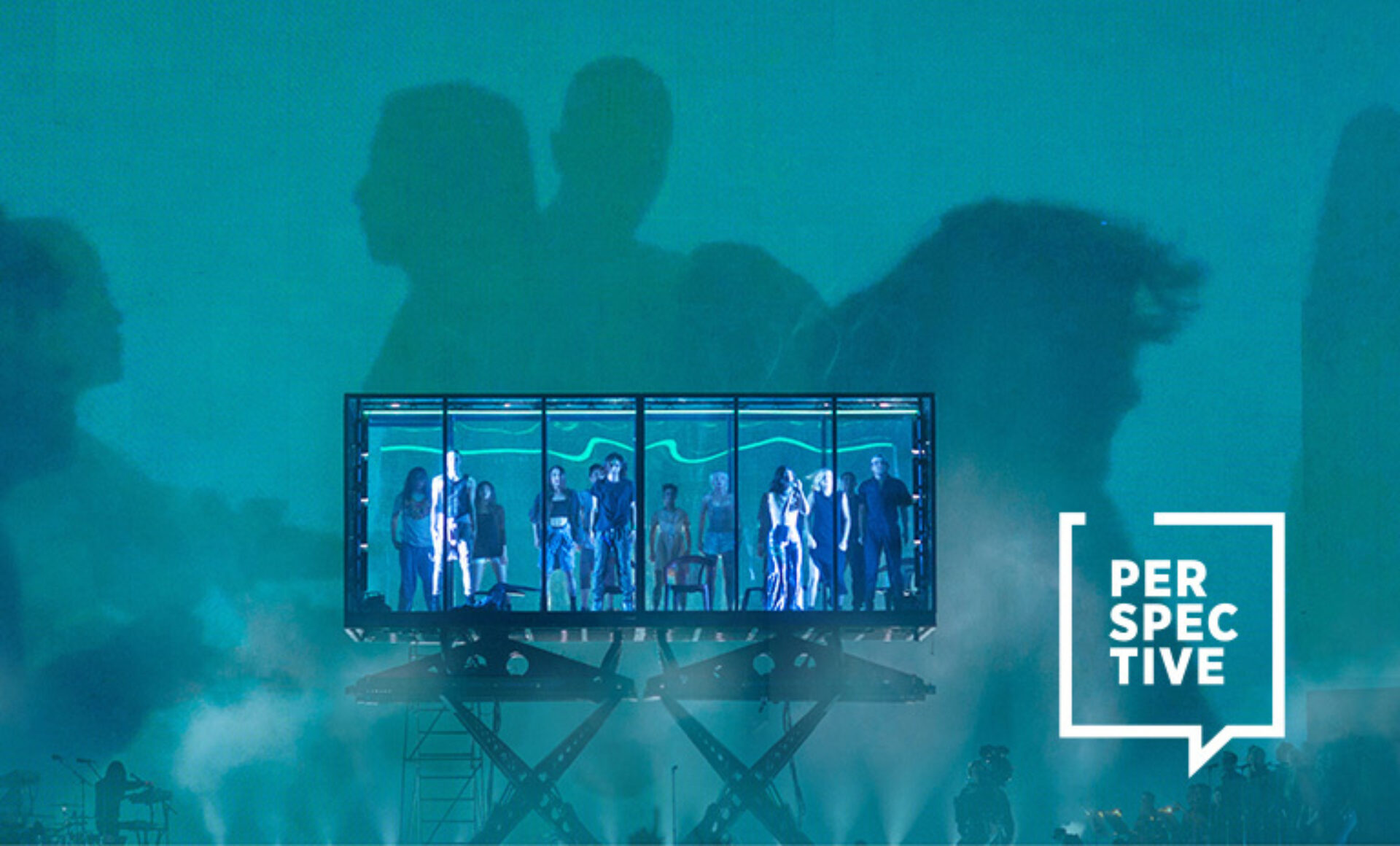(Above Image: NAACP Legal Defense Fund HQ. Image courtesy of OTJ Architects)
Designers are always looking for tools to enhance their design practice but also their community and social practices as well. EDI has always been an important value in the IIDA community when thinking about how to achieve a more diverse industry. Shauna Stallworth, IIDA, is a licensed interior designer, executive leader, and managing principal at LUHF Branded Environments. LUHF is a Small Business Administration (SBA)-certified Women Owned Small Business design and furniture services company with a focus on interior design, furniture strategy and acquisition, project management and facilities management services.
As an interior architect, designer, entrepreneur, and proud graduate of Howard University, Stallworth understands the importance of representation and the impact diversity has on the industry. Being able to create an environment where people who look like you have a seat at the table and are in the room is the core of EDI—it isn't just about race and gender but it’s also about belonging and taking action. Stallworth shares with us her journey in the industry moving from designing to dealership and the importance of creating opportunities for cultural awareness and inclusiveness in our firms and across the design profession.
How and why did you decide to transition into the dealership space?
I’ve worked in all aspects of the design industries: architecture, interior design, senior vice president of corporate real estate, and furniture dealerships. Having spent nine-plus years managing a small dealership and realizing the power of collaboration from previous opportunities; it became crystal clear that a cohesive, dedicated team is essential to today’s design world. LUHF has become an integral part of a diverse partnership that includes the architect, a larger furniture dealership, manufacturing partners, and other essential allied partners as needed. This allows us to have a seamless integration covering a full range of services for the client.

Should we be thinking more about diversity and equity on the dealer side? How are dealers considered when we talk about EDI in the larger industry?
There is an opportunity to embrace EDI more fully across the board. It begins by recruiting and hiring talent from HBCUs with backgrounds not only in architecture, design, business, engineering, and project management. Most designers of color have not been exposed to the allied fields of furniture dealerships, manufacturers, or allied specialists. The first step is to recruit and hire persons of color and expose them to areas of expertise both within the dealership and externally. Exposure and training are key to accessing undeveloped talent. At present, there are so many solicitations and requirements that ask for a company’s diversity statement. While it is up to the dealers to write their narrative, they should also commit to living it. Can they show a diverse workplace both in the C-suites and overall team?

How did you become a part of the Organization of Black Designers (OBD)? Why is it important?
Founded in the early 1990’s, OBD was the first multi-discipline, multicultural organization that continues to highlight and advance the achievements of designers of color. OBD founder, David Rice, a graphic and furniture designer, had a vision that resonated with me. I became the organization’s first executive director, and I am extremely proud of the organization’s work.
It is important that the design communities at large become exposed to the full measure of creativity in ALL facets of our industry: new and recognized colleagues, the sharing of ideas and meaningful dialogue, through published work, throughout our institutions of education, and through participation in organizations and associations. Creativity is our collective thread and is worth showcasing everyone who engages in the creative design process.
Why are HBCUs and organizations like OBD important for laying the foundation for a more diverse industry?
Diversity happens when there’s a directed confluence of people, ideas, and actions. HBCUs benefit when teamed with other universities, organizations, firms, and mentors from the industry. Organizations like OBD provide visibility and support. This can be a means to introduce more designers of color into the wider allied industries.

Image courtesy of OTJ Architects

Image courtesy of OTJ Architects
How can other designers lead by example in integrating EDI?
There should be concerted efforts to harness the power of connection. Post pandemic, how do we navigate the new dynamics of working from home versus office collaboration? What happens to mentoring newly minted colleagues? Does virtual collaboration really have the same benefits as in-person? These among other questions should be decided by each office.
When thinking about how designers can lead by example, I often refer to the following words:
Camaraderie (friendly-good fellowship)
Collaboration (work jointly with others or together)
Community (people with common interests)
Culture (set of shared attitudes, values, goals, and practices)
Continuity (uninterrupted connection, succession)
Collective Power (of, relating to, or being a group of like-minded individuals)
And I would add: EDI-B, Equity, Diversity, Inclusion and Belonging






